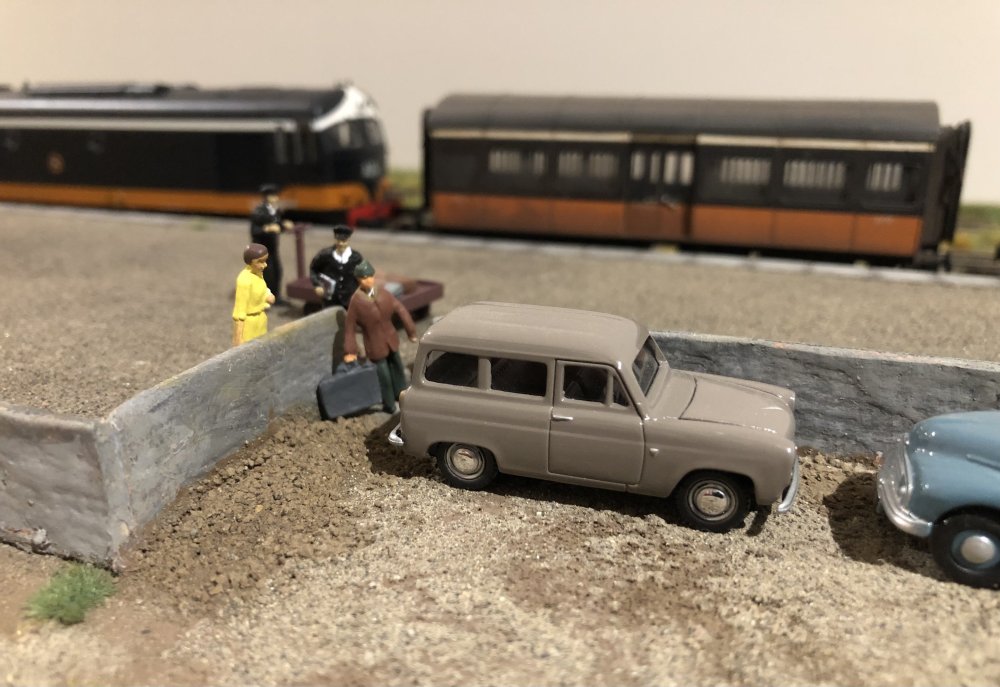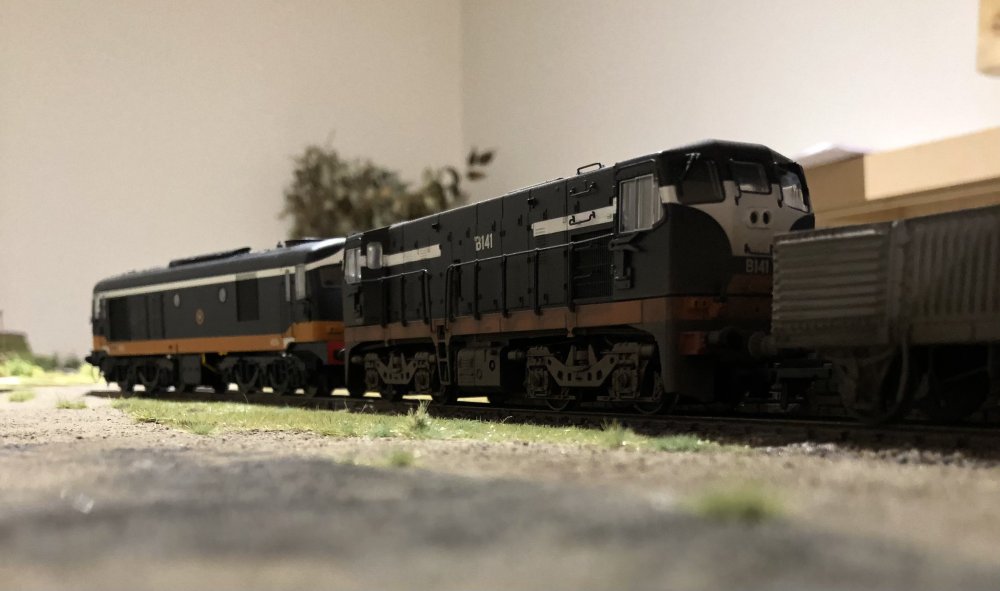-
Posts
15,854 -
Joined
-
Last visited
-
Days Won
393
Content Type
Profiles
Forums
Events
Gallery
Everything posted by jhb171achill
-
Don’t know - would be handy though.
-
On a related note, has anyone any idea where one CAN use these wretched things? I have €20 one which nobody accepts…
-
A quiet spring evening in 1970 at Dugort Harbour. A “transplant” arrives with the last train of the day, straight out of Inchicore. Meanwhile, the normal 141 finishes shunting the extra goods shuttle from “town”, and the several passengers who came in on the local drift off into the night.
-
Will we see more 071 / 141/ 181 from Murphy models?
jhb171achill replied to Sean's topic in Irish Models
Not a bad idea at all! -
This particular one, for anyone interested who can attend the National Archives in Bishop Street, Dublin, is among the Office of Public Works (OPW) records, reference OPW 1191/26. Title is "Collooney, Ballina & Belmullet Railway" dated 1909-26. Yes, indeed, there were MANY proposals never built!
-
I was in the National Archives yesterday and by accident I came across a file dating from about 1900, in which a Collooney - Killala railway was suggested…
-
A man I used to know who was a senior under-writer in a large insurance company told me it’s always better value to have a collection of anything of value listed under a normal household policy - so if you’ve a layout worth, say, €5000, you just increase your “household contents” by that amount.
-
Not within my modelling era preference, and something I confess to knowing less than zero about, but totally right. Your info on this thread is invaluable.
-
Very nice job indeed!
-
Strange American train horn sound for an IE loco! Interior shots are a laminate.
-
Easy to weather too!
-
These are good quality and broadside, and show the original condition. The liveries are "works grey", not the actual liveries ever carried. For official photographs, the first of each was painted up in various shades of white, black and light grey shades to show detail. Contrsats, such as dark ironwork and pale bodywork, were not carried into real life. Livery notes for all of the following are: GSWR wagons: All-over DARK grey, ironwork, roof & chassis included. Lettering white. GSR wagons: Dark grey as shown on the GS grain hoppers, equivalent to LMS grey in England - again, all-encompassing. Ranks wagon - at that stage, all over dark grey. CIE grey after c.1960 was lighter than any of the above. Locos: 36 & 123 lined dark olive green, same as 90 at Downpatrick. The four in light grey, lined or unlined, would also have got this livery up to about 1900, and lined black between then and 1915, after which the all-grey appeared (in real life)! The coach - very dark "crimson lake", lined - as per the shade used on Downpatrick's No. 836, or the RPSI's 1142. Loco 850 - not sure. The white motion certainly wasn't used in traffic - the rest seems very dark, possible poor light (hence the white?) This locomotive would have been grey when new. The pics are from an old collection in the hands of a friend of mine: 204 appears to be standard dark grey, while the MGWR tank, with no lining showing, must be in the 1918-25 MGWR black.
-
Yes, they were indeed - the initial glossiness of the black, same as on other CIE roofs in green and black'n'tan eras, would last about four seconds flat before becoming matt!
-
Nice looking book. I wonder if it starts in the early days with photos of 121s when new, and both them and 141 / 181s in black'n'tan? Or is it just modern photos (IE, Supertrain), does anyone know?
-
That would be weathering. They were all painted black in actual fact. If you want them to look weathered, which of course would be far more appropriate than anything pristine, a grey background would be too consistent - I would paint them a way darker grey and weather it heavily.
-
Brilliant! And your painting idea is a very good one too. That size will give many possibilities as you have outlined. Best of luck with it.
-
You mean colour of roofs? That would be black.........
-
BidX1. A piece of railway heritage for 300K
jhb171achill replied to gph2000's topic in For Sale or Wanted
That explains it! -
BidX1. A piece of railway heritage for 300K
jhb171achill replied to gph2000's topic in For Sale or Wanted
Hardly "railway heritage", though! -
BidX1. A piece of railway heritage for 300K
jhb171achill replied to gph2000's topic in For Sale or Wanted
What's the "railway heritage" bit? -
That's one of the Malahide Castle (as opposed to Cyril Fry's) models from the 1990s Malahide Castle layout. If anyone is interested I will post pics of others next time I'm in the storage place.
-
It was painted brown, but a one-off. Departmental stuff was generally all grey, including carriages for transporting staff and used as crew quarters, except steam cranes which I am nearly sure were plain black all over. That particular crew van was seen all over the south west at the time when Valentia, Kenmare and West Cork were being lifted. I believe it was a purpose-built maintenance train van, not (as was more usual) a conversion of an old coach. It has a normal number rather than an "A" series number. In later years, departmental vehicles received several liveries. An old GSWR third, No. 837, was painted a brown colour, and while most other old converted coaches got standard wagon grey, albeit with all sorts of one-off markings, some old coaches were painted in old green paint, probably to use it up, with red ends. One old WLWR third, which had been briefly used as a camping coach in the early 60s, retained the Donegal-esque red and cream (which actually looked very well) into its departmental days and eventual scrapping at Mullingar.
.png.c363cdf5c3fb7955cd92a55eb6dbbae0.png)






